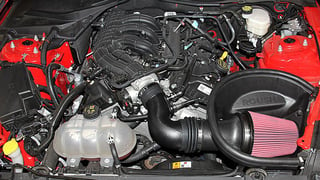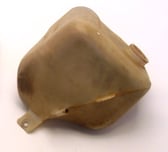1. Pros
 There is a reason that all OEM automotive manufacturers use plastic tanks in their vehicles. At large quantity a plastic tank is by far the best option. Once the tooling and set up is created the mass production scale makes it the best option when considering costs. Beside the cost effectiveness polyethylene is a very easily sourced material.
There is a reason that all OEM automotive manufacturers use plastic tanks in their vehicles. At large quantity a plastic tank is by far the best option. Once the tooling and set up is created the mass production scale makes it the best option when considering costs. Beside the cost effectiveness polyethylene is a very easily sourced material.
From a performance perspective polyethylene offers a few positives. By using polyethylene the tank offers high ductile and impact strength initially. The tanks are also moisture resistant which is important when being used to contain liquid. The final positive is that the tanks can be made transparent in order to reveal levels much more easily.
2. Cons
The pros of plastic coolant tanks can also be considered cons depending on the situation. One of the main disadvantages to plastic tanks is that in smaller runs the cost to create tooling can be too much. Tooling significantly increases the cost of the initial run and can easily out weight the benefit of a low per piece cost. For smaller runs this effect can eliminate the overall cost effectiveness of plastic tanks. If this already has you thinking that your application needs something other then plastic skip to the bottom and Download our Aluminum Tank Guide to learn more about aluminum tank options.
The other main disadvantages of plastic tanks have to do with durability. The type of heat that is found in the  engine bay of a car has a terrible affect on plastic tanks. The thermal properties of a polyethylene tank are not forgiving in the least. Depending on the grade of polyethylene used the material will start softening at 248 degrees F. Along with the softening of the tank you will also see an array of problems all stemming from heat. The thermal properties of the tank cause a high rate of thermal expansion which causes the tank
engine bay of a car has a terrible affect on plastic tanks. The thermal properties of a polyethylene tank are not forgiving in the least. Depending on the grade of polyethylene used the material will start softening at 248 degrees F. Along with the softening of the tank you will also see an array of problems all stemming from heat. The thermal properties of the tank cause a high rate of thermal expansion which causes the tank  to expand and contract with heating and cooling. The expanding and contracting can cause the seams of the tank to crack and eventually leak. The heating and cooling also ends up causing discoloration in the tank. What starts out as a nice fresh looking white plastic tank will start to get dark and cloudy after many heat cycles. With the heating and cooling cycles that a tank will see over it's lifetime the polyethylene will end up becoming brittle. After becoming brittle you will see issues like broken brackets and even stress cracks that cause leaks.
to expand and contract with heating and cooling. The expanding and contracting can cause the seams of the tank to crack and eventually leak. The heating and cooling also ends up causing discoloration in the tank. What starts out as a nice fresh looking white plastic tank will start to get dark and cloudy after many heat cycles. With the heating and cooling cycles that a tank will see over it's lifetime the polyethylene will end up becoming brittle. After becoming brittle you will see issues like broken brackets and even stress cracks that cause leaks.
The final disadvantage to using a plastic tank is when being repaired. The chemical properties of polyethylene make bonding a problem. Many people try to seal a crack after it has occurred, but find that any repair can only delay the inevitable failure of the tank.
3. Conclusion
Now that we know a little about what plastic can and can not do, you can start to think about if it is the right choice for you. If your quantity requirements are exceptionally large and your application is fairly stable in terms of heat exposure you may want to consider a plastic tank. Your per piece cost will be low with plastic once you are up and running and you will have the option to choose opaque or clear. If your tank is a lower quantity and is expected to serve a long life span or to operate in a demanding environment, you might want to consider some of the alternatives to plastic.
The main, if not only, alternative to plastic is metal, most commonly aluminum. Tanks of this type are perfect in industrial or high performance applications. Aluminum tanks offer natural corrosion resistance, are impact resistant, and have visual appeal over plastic. For more details on how aluminum tanks perform in different applications look for our upcoming blog post on the subject. Subscribe to The Canton Blog at the top of the page to be sure not to miss it.
If your considering an aluminum tank, download our tank designers guide and review the main considerations in aluminum tank design. 
